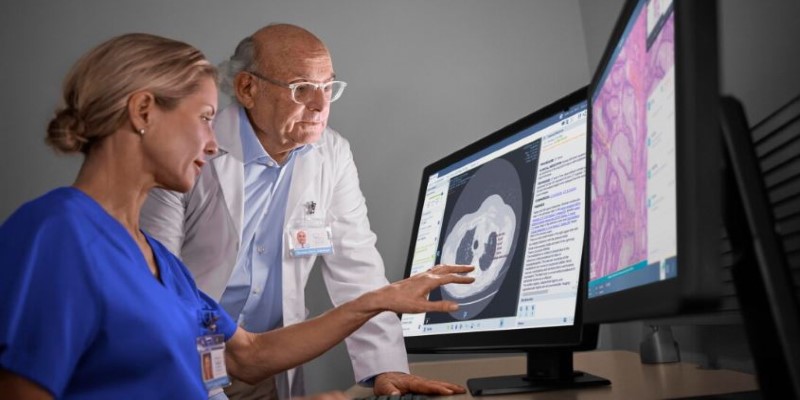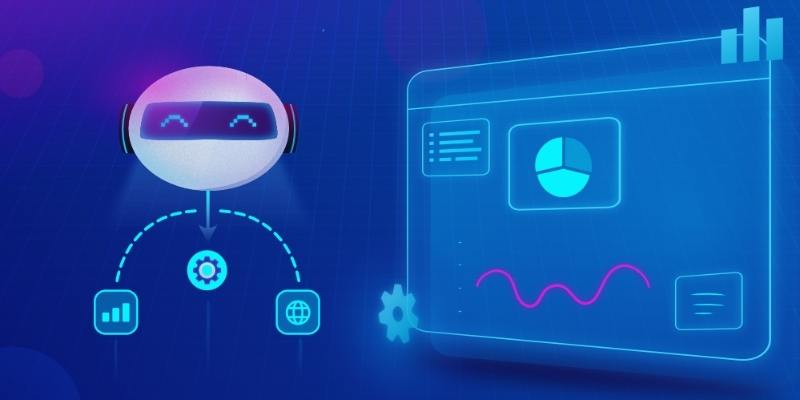The integration of cloud computing into healthcare has opened doors to revolutionary advancements in patient care and medical research. When industry giants like AWS and Philips join forces, the impact on healthcare becomes more profound. Their partnership is centered around leveraging cloud technology to enhance data management, enable real-time insights, and improve the accessibility of medical services.
This collaboration, between Philips's expertise in healthcare solutions and AWS's mighty cloud infrastructure, aims to shape the way patients and healthcare service providers interact with data. This will result in a more cost-effective, patient-centric, and efficient healthcare delivery system. But what drives these two companies towards such a historic partnership? Here's an articulation of how this partnership shapes the future.
The Foundation of the AWS & Philips Partnership
The heart of this partnership comes from a collective vision: using cloud innovation in the creation of smarter healthcare. AWS is leading the advanced delivery of cloud, with unmatched levels of scalability and security and outstanding data analytics capacity. Philips holds decades of healthcare equipment and platform development experience for medical technology applications worldwide. Partnering, they aspire to solve complex problems in health care, especially fragmented data systems, delayed diagnostic processes, and low patient activation.
On that basis, the two collaborate on cloud infrastructure provided by AWS, with tools to help Philips store and process huge volumes of healthcare data safely. Philips cloud-native solutions, such as its HealthSuite platform, will use these tools to make real-time patient data available for healthcare providers, thus providing quicker clinical decisions, better coordination between medical teams, and a more personalized approach to treatment plans.
They also work on several fronts, leveraging the progress of artificial intelligence (AI) and ML in healthcare. With regard to this, AWS's AI and ML services enable Philips to develop intelligent applications that can sense anomalies in medical imaging, predict disease progression, or automate a lot of routine tasks. Together, they are sowing the seeds for a future in which healthcare systems will be better left to remain more autonomous and much more efficient, but with less human error.
How Cloud Partnerships are Shaping Modern Healthcare?
The collaboration between AWS and Philips is just one example of how cloud partnerships are redefining the healthcare landscape. Cloud technology allows healthcare providers to move beyond traditional limitations, enabling them to focus on innovation and patient-centered care. As more companies in the tech and healthcare sectors join forces, we are likely to see rapid advancements in digital health solutions.

Cloud partnerships offer limitless possibilities, from wearable health trackers that provide continuous monitoring to AI-powered diagnostic tools that assist doctors in identifying conditions earlier. The AWS & Philips partnership stands as a model for future collaborations, emphasizing the importance of combining technological expertise with healthcare know-how. This trend is expected to accelerate the shift towards a more data-driven and personalized approach in medicine, ultimately benefiting both providers and patients.
Benefits of Cloud Healthcare Solutions
The AWS & Philips partnership introduces numerous benefits that extend across the healthcare ecosystem. One of the most significant advantages is enhanced data interoperability. In many healthcare systems, patient data is scattered across various platforms and formats, making it difficult for providers to access a complete medical history. By centralizing data on a secure cloud platform, Philips ensures that healthcare professionals can view and share information seamlessly, leading to improved continuity of care.
Another critical benefit is scalability. Traditional healthcare IT infrastructure often struggles to keep up with growing data demands. With AWS’s scalable cloud services, healthcare providers can expand their digital capabilities without worrying about capacity limitations or hardware costs. This flexibility allows hospitals and clinics to adopt new digital tools and services quickly, ensuring they stay at the forefront of medical innovation.
Patient engagement is another area where this partnership shows promise. With cloud-enabled platforms, patients can access their health records, schedule appointments, and even participate in telehealth sessions—all from the convenience of their devices. Philips’s patient-centric solutions, combined with AWS’s cloud power, aim to enhance the overall healthcare experience, making it more interactive and transparent for patients.
The partnership also drives advancements in medical research. By utilizing AWS's high-performance computing services, researchers can process large datasets faster, accelerating the discovery of new treatments and therapies. Philips's data-driven approach, supported by AWS's computational power, helps researchers analyze clinical data in real time, facilitating breakthroughs in precision medicine and personalized treatments.
The Future of Healthcare with AWS & Philips
The AWS & Philips partnership marks a pivotal shift toward a smarter and more interconnected healthcare landscape. By integrating advanced cloud technology and healthcare expertise, they aim to introduce cutting-edge innovations, particularly in predictive analytics. Machine learning models can analyze large datasets to forecast potential health risks, enabling early interventions that lower costs and improve patient outcomes. This proactive approach enhances care quality while reducing the burden on healthcare providers.

Another transformative impact lies in expanding healthcare access to underserved regions. Through telemedicine, remote monitoring, and mobile health solutions powered by AWS’s global cloud infrastructure, Philips can bridge the gap for communities with limited medical facilities. This ensures broader access to quality care, regardless of location.
Security and regulatory compliance are key pillars of this partnership. AWS’s robust encryption and Philips’s adherence to standards like HIPAA and GDPR safeguard sensitive patient information, fostering trust in cloud healthcare solutions.
Looking ahead, the collaboration may extend to home care and wearable devices, enabling continuous health monitoring and timely medical interventions. Such advancements promise a future of personalized, efficient, and accessible healthcare for all.
Conclusion
The AWS & Philips partnership signifies a groundbreaking shift in healthcare, harnessing cloud technology to improve data management, enhance patient engagement, and accelerate medical research. By leveraging AWS’s scalable infrastructure and Philips’s healthcare expertise, they are addressing long-standing challenges and paving the way for smarter, more connected healthcare systems. From real-time insights to AI-driven innovations, this collaboration offers immense potential for better patient outcomes and more efficient care delivery. As the partnership evolves, it will likely expand into areas like wearable health tech and remote care, ultimately shaping a future where healthcare is more accessible, personalized, and proactive.





